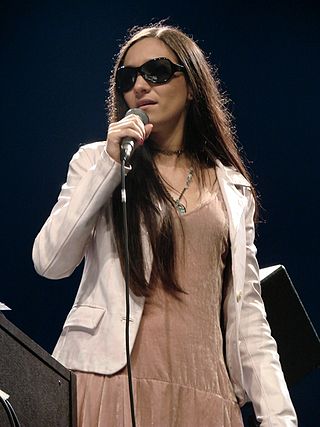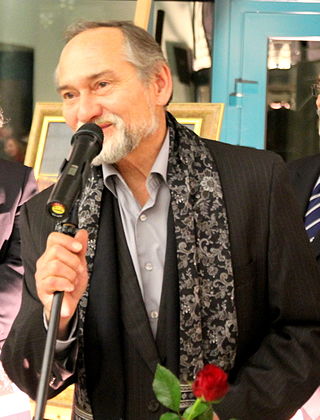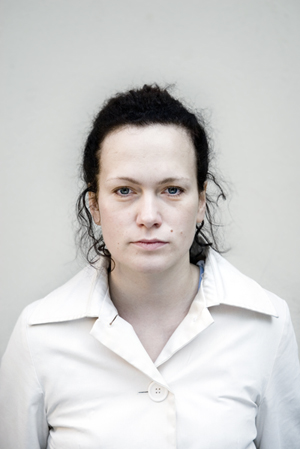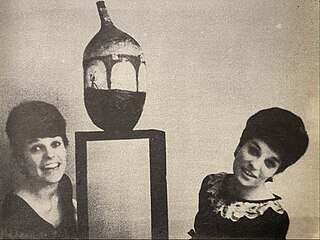
The Centre of Polish Sculpture in Orońsko, near Radom, Poland, is a museum housed at Józef Brandt’s 19th-century manor house. The centre's collections comprise 621 sculptures, installations and other art forms owned by the centre, as well as 173 deposit items. The collections additionally include 70 paintings, drawings and tapestries. The centre's activities and the manor complex are maintained by the Joseph Brandt Foundation. The centre also provides technical support for artists who participate in its Sculpting Program.
Krytyka Polityczna is a network of Polish left-wing intellectuals. The network is based around a journal of the same name founded by Sławomir Sierakowski in 2002, but is open to voices from across the political spectrum. The name draws on the tradition of Young Poland’s "Krytyka", a monthly magazine published by Wilhelm Feldman at the beginning of the 20th century, and on the samizdat "Krytyka" which served as a forum for opposition writers and journalists in the 1970s and 1980s.

Dorota Miśkiewicz is a Polish singer, songwriter, composer, and violinist.

The "Łaźnia" Centre for Contemporary Art is a municipal cultural institution and art gallery in the Dolne Miasto district of Gdańsk, Poland, located in the abandoned municipal bathhouse. The word "łaźnia" means "bathhouse" in Polish.

Erazm Ciołek was a Polish photojournalist, author of many exhibitions and laureate of various awards. He is considered as the main photographer of the Solidarity movement.

Jaroslaw Pijarowski is a Polish avant-garde artist, art curator and founder of Teatr Tworzenia. He creates contemporary music, poetry, photography, fine arts and theatre-music spectacles.
Szymon Roginski is a Polish photographer.

Grzegorz Stec is a Polish painter, graphic artist and poet.

Magda Bielesz – painter, author of installations, objects, drawings, videos.

Bogna Burska is a Polish playwright and visual artist known for installations, spatial photography and video. Her art is presented from a feminist perspective. Her initial painting compositions were narratives of congealed blood forms made with red paints applied by fingers on the walls, canvas and glass.

Grzegorz Berendt is a Polish historian. He is a professor at the University of Gdańsk and affiliated with the Institute of National Remembrance. Berendt is the director of the Museum of the Second World War.

Bogusław Bachorczyk is a Polish painter, draftsman and sculptor.

Offending religious feelings is a blasphemy law in Poland. According to Article 196 of the Penal Code: "Whoever offends the religious feelings of other persons by publicly insulting an object of religious worship, or a place designated for public religious ceremonies, is liable to pay a fine, have their liberty limited, or be deprived of their liberty for a period of up to two years."

Stanisław Horno-Popławski (1902-1997) was a Russian-Polish painter, sculptor and pedagogue.
Alicja Buławka-Fankidejska is a Polish artist, ceramist and sculptor.
Elżbieta Jabłońska is a Polish contemporary visual artist, and professor. She has served as the Chair of Drawing and has taught art at Nicolaus Copernicus University in Toruń since 1996. Jablonska is known for photography, film, installation art, and performance art. Her artwork engages with Polish stereotypes and myths of women, mothers, and the Catholicism. She lives in Bydgoszcz in northern Poland, in a farming cooperative.

Alicja Wahl was a Polish artist, also known for her contribution to the cultural life of Warsaw in the 80s and 90s.
Pasja is an installation art by Dorota Nieznalska, a contemporary Polish artist, belonging to the trend of critical art, exhibited at the Gdańsk Wyspa Gallery in 2001. The installation consisted of two parts: a video showing a man exercising in a gym and a metal cross suspended on a chain with an embedded photograph of a penis in the central place.














